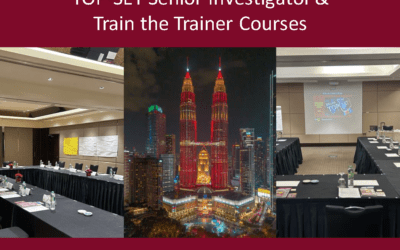Kelvin TOP-SET teaches the investigative process from beginning to end, including the Incident Statement, Planning, Storyboarding, Root Cause Analysis, report writing and developing SMART actions. If you carry out the TOP-SET process to the letter on your incident investigation, and write a perfect report with well-constructed SMART actions, all will be well, the workplace will be happier, safer, more productive and more efficient…won’t it?
Sadly no, for there is a major issue that must be addressed, and that is… What next? What happens after the report and recommendations have been published and digested? We suggest a new approach, the SMARTEST approach, where:
E = Engage and Embed S = Share and Sustain T = Test and Trend
These six further steps are hugely important. Without them, the investigation and report are worthless.
Those who read the report have to act on it. They must feel the need to engage and be persuaded that the actions are worth taking. They must then share their knowledge within the company in such a way that they can be sure it will be digested, learned from and acted upon.
Moreover, steps must be taken to fight complacency and ‘organisational rust’. Changes should be sustained over a long period of time, or better, forever. This all requires careful consideration, with effective planning, robust strategies and successful communication.
After the recommendations have been adopted and embedded, you must check regularly that the new ways of working are actually in place and working to expectation. This requires testing and trending. Many companies trend, and there is much value in doing so, but care must be taken to ensure the categories chosen are appropriate, clear and worthwhile. The number of categories selected must relate to the number of reported incidents and the number of contributory factors in order to produce credible data.
Trending of Technical Failures:
A simple example – Any technical failure must be categorised under five straightforward headings:
Design, Manufacture, Purchase, Use and Maintenance.
A snapped chain or a blown fuse cannot be given as a root cause. Chains and fuses can’t repair themselves; they are inanimate objects. Something has gone wrong that has to be of human origin. For example:
– the design of the wheel was inappropriate for the job
– the manufacture of the pin was flawed
– the wrong fuse was bought
– the chain was put under undue strain
– the wire was rusty because it hadn’t been checked or replaced
These are all human failures not technical failures, and it is very easy to gather data from investigations using these five categories. This is an example of trending at its simplest.
So, think SMARTEST in the future. SMART recommendations must be Engaged, Embedded, Shared, Sustained, Tested and Trended to complete the entire investigative process, and make the workplace more prosperous and, more importantly, safer.



